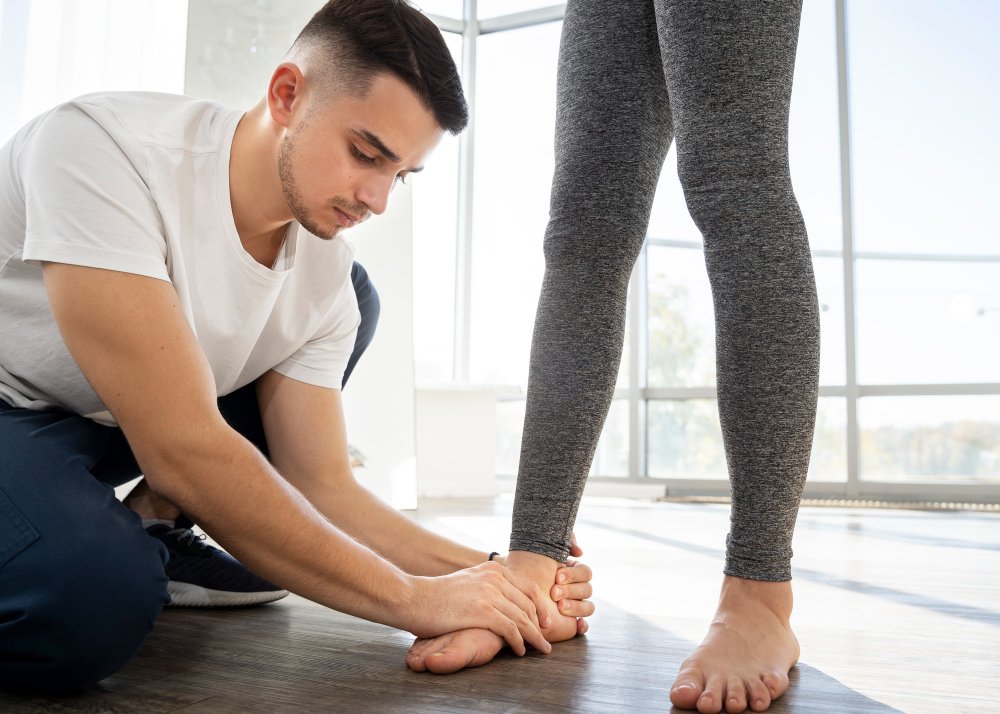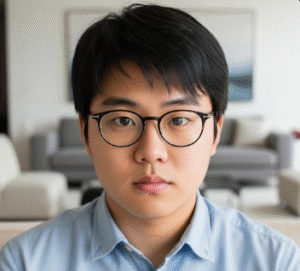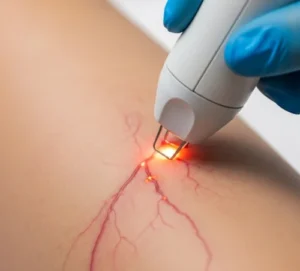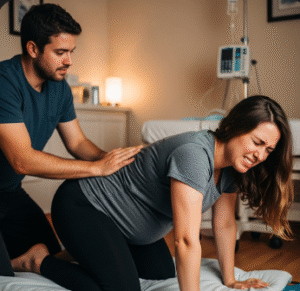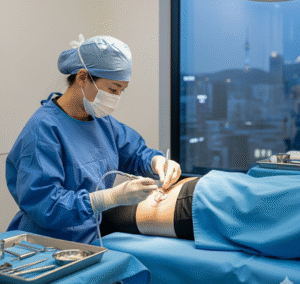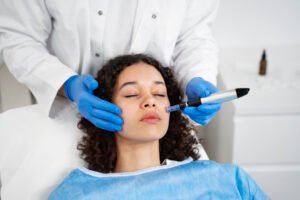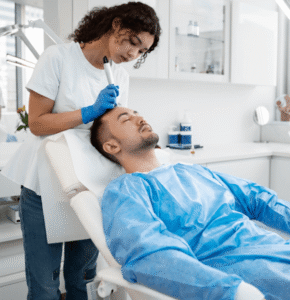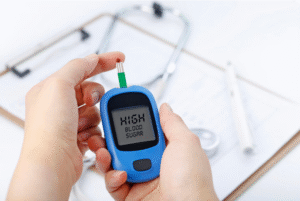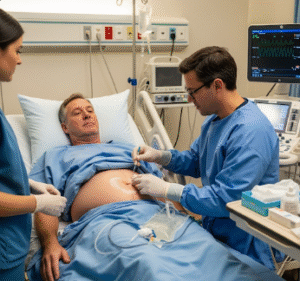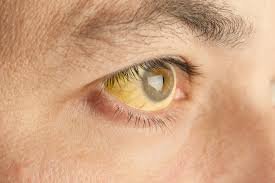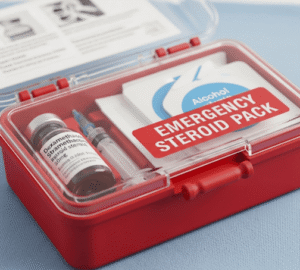Overview
Haglund’s deformity is a bony enlargement on the back of the heel, often leading to irritation of the surrounding soft tissue and the Achilles tendon. This condition can cause pain, swelling, and difficulty walking or wearing shoes.
In Korea, Haglund’s deformity is commonly seen in adults who wear tight or rigid footwear, athletes, or individuals with high-arched feet. Korean orthopedic clinics offer advanced diagnostic imaging, conservative treatment, and minimally invasive surgical options for effective management.
What is Haglund’s Deformity?
Haglund’s deformity, sometimes called “pump bump,” occurs when the posterior aspect of the heel bone (calcaneus) becomes enlarged. The bump can rub against the Achilles tendon or footwear, leading to inflammation (bursitis) and pain.
Symptoms
- Pain at the back of the heel, especially when walking or running
- Swelling or redness around the Achilles tendon insertion
- Presence of a visible bump on the heel
- Stiffness in the ankle or foot
- Irritation when wearing shoes with rigid backs
- Thickened or inflamed bursa (bursitis)
Causes
- Repetitive pressure from tight shoes, especially high heels or rigid footwear
- High-arched feet (pes cavus)
- Abnormal foot biomechanics
- Overuse in running or sports activities
- Genetic predisposition to bony growths
Risk Factors
- Athletes or runners
- People wearing high-heeled shoes or tight footwear regularly
- Individuals with high arches or abnormal foot alignment
- Middle-aged adults, more common in women
- History of Achilles tendon injury
Complications
- Chronic Achilles tendinitis
- Bursitis (inflammation of the bursa)
- Persistent heel pain affecting walking and daily activities
- Thickening or degeneration of the Achilles tendon if untreated
- Limited mobility and reduced quality of life
Prevention
- Wearing well-fitted shoes with soft backs
- Using heel pads or orthotics to reduce pressure
- Stretching and strengthening exercises for the Achilles tendon
- Avoiding repetitive stress on the heels
- Early treatment of pain or swelling at the heel
Treatment Options in Korea
Diagnosis
- Physical examination of the heel and Achilles tendon
- X-rays to assess bony enlargement
- Ultrasound or MRI for soft tissue and tendon evaluation
Medical Treatments
- Conservative care: heel pads, cushioned shoes, orthotic inserts
- Anti-inflammatory medications for pain relief
- Physical therapy to improve foot mechanics and reduce strain
- Ice therapy to reduce swelling
Surgical or Advanced Therapies
- Minimally invasive surgery to remove the bony prominence
- Bursa removal or tendon repair if chronic inflammation exists
- Post-surgical rehabilitation programs for full recovery
- Advanced techniques available in Korea include arthroscopic and small-incision surgery, reducing recovery time
Rehabilitation and Support
- Gradual return to activity after surgery
- Foot strengthening and stretching exercises
- Monitoring for recurrence
- Patient education on proper footwear and activity modification

